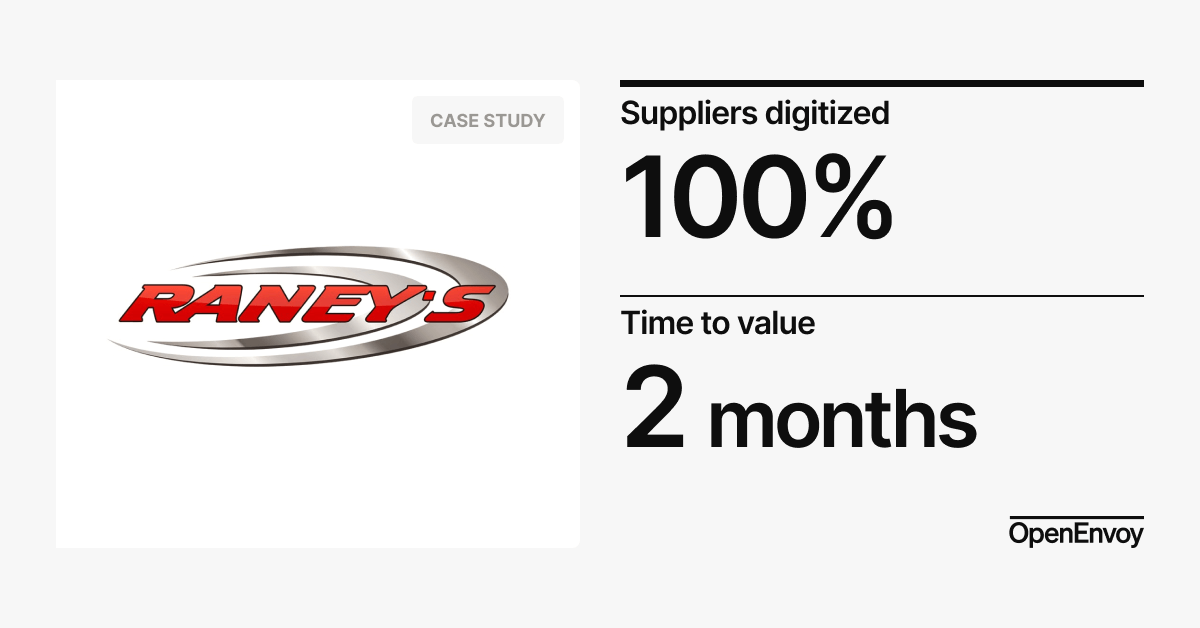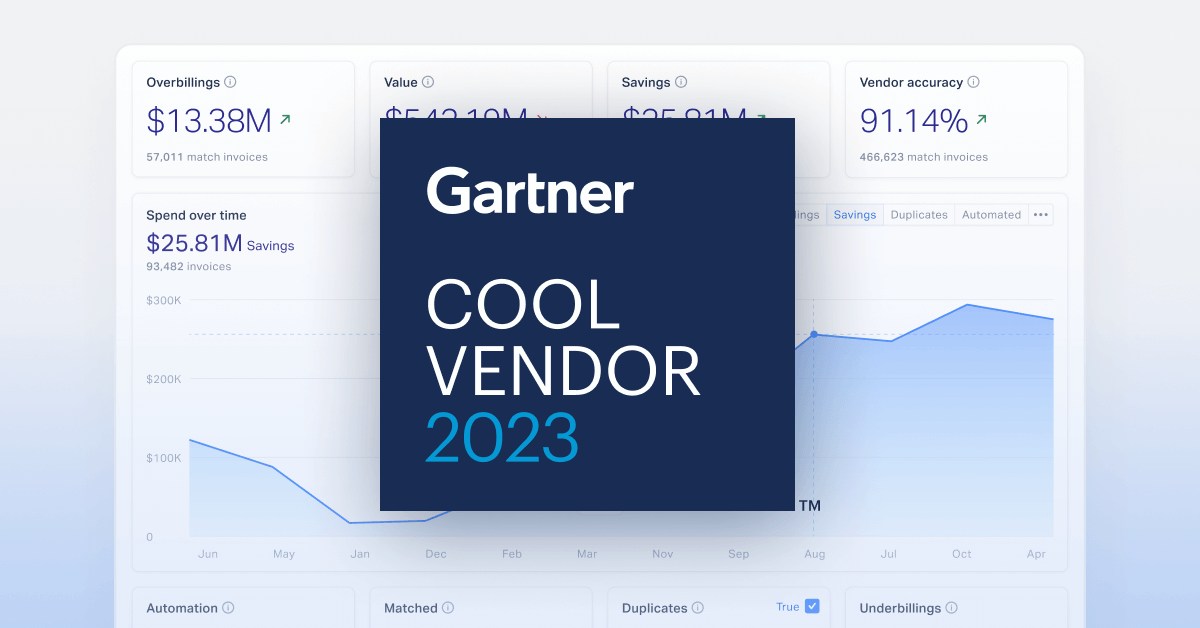Foreward
Every day, in conversations with customers, I'm struck by this theme: Most have no idea that the solution to their AP struggles even exists. They've grown accustomed to the status quo, believing that risks of errors, fraud, and overbilling are simply unavoidable.
Concerns about non-compliance, fraud, and overbilling can keep CFOs, Controllers, and Heads of AP up at night. They worry not just about exposure by the company, but also potential damage to their own careers if something slips through the cracks. Their current solutions leave them feeling like they're playing whack-a-mole, never truly confident that they've caught everything.
Frankly, it's been a wild ride these past few years. We've seen countless companies invest in AP automation solutions, only to find themselves stuck with the same challenges. Tools might make existing processes faster, but they do little to address the root causes of financial and compliance headaches.
The answer to finding game-changing improvement lies in Applied AI. It's the revolutionary technology that underpins Real-Time Audit, and it's the only way to achieve true control. This guide sheds light on the current state of AP automation and unveils the transformative power of Applied AI. It's no longer about making a broken system run a little faster—it's about building a financial fortress for the future.
The demands from your shareholders and board are clear: efficiency, accuracy, compliance, and ironclad security. Applied AI is the key to delivering on those demands.
Welcome to the future of Accounts Payable.
Matthew Tillman
CEO, OpenEnvoy
.png?width=141&height=180&name=Matt%20(1).png)
THE AP PROBLEM
Hidden Dangers in Everyday Transactions
In today's tough business environment, rising costs threaten to squeeze the life out of margins. Everyday transactions involving materials prices or global shipping charges may also include supplier billing discrepancies that are difficult to identify. The sheer volume of clerical work needed to verify these transactions can mean that errors go undetected, creating a drain on finances and raising questions about controls.
Beyond errors, fraud can also drain cash and damage reputations. Once discovered, fraud and non-compliance can signal weaknesses in corporate controls, raising real concerns from boards and shareholders, and even prompting unwelcome headlines. A single discrepancy can trigger a cascade of bad news:
- Cash drains. Studies show that a staggering 12% of invoices contain errors, translating to big cash drains for businesses clinging to outdated methods. Imagine the board meeting when they discover that millions have vanished due to preventable mistakes.
- Compliance nightmares. Minor invoice errors can snowball into major audit and compliance issues. Picture goods stuck in port or criminal prosecutions because of an inaccurate invoice.
- Legal repercussions. In the worst case, undetected fraud or inaccurate records could expose your company and your executives to punishment.
Traditional Accounts Payable (AP) automation solutions promise to reduce costs and improve compliance, but they can’t fully support complex AP environments. Typical AP automation takes manual processes and makes them run faster—still relying on people to approve invoices. Work is simply shuffled around, rather than being fully automated. These outdated methods leave the business vulnerable to:
- Excess clerical work. Even leading AP automation solutions leave AP teams stretched thin with the work that remains. With templating issues, non-PO invoices that can’t be matched, manual GL coding, and manual compliance reviews, teams are left overwhelmed and prone to making errors.
- Outright fraud. Gaps in fully-automated control processes can expose companies to external and even internal fraud, including payments to fake suppliers and unauthorized changes to bank details. AI-powered deep fakes increase the risk of losses.
- Non-Compliance. Duplicate charges across invoices, overbilling according to contracted terms, and missed volume discounts may be simple billing errors by well-meaning suppliers. Or they may be deliberate fraud. Missing or inaccurate tax or customs information can lead to compliance gaps and repercussions from regulators.
This guide highlights the dangers of relying on basic AP automation approaches, and it shows why Applied AI is the critical strategic advantage to stay ahead of the curve.
INTRODUCING APPLIED AI
Why Applied AI Outperforms Simple Automation

Applied AI Supports End-to-End Business Process
Rather than just making your current process run faster with GenAI or RPA services, Applied AI lets you rethink your process to find a better way. Don’t have a PO? How about matching that invoice to the receipts and contracts that you do have? Expanding automation with Real-Time Invoice Audit allows matching invoices against receipts, contracts, and other documents, avoiding errors and freeing up your team for higher-level work.
Real-Time Invoice Audit Is the New Standard of Control
Typical AP processes capture invoices, match to purchase orders, and route transactions to company experts for approval. A few transactions may be audited for fraud, duplication, and contract compliance. End-of-year audits often uncover overbilling, leading to time-consuming disputes and potential clawbacks of overpayments.
Real-Time Audit moves beyond sampling invoices to fully auditing each transaction at the line-item level. Many transactions can be automatically approved and safely paid without manual review. Where review is required according to corporate controls, pre-audits save time for reviewers. Accounting professionals can spend their time reviewing audit exceptions and managing disputes.

THE REAL COSTS OF NOT ADOPTING APPLIED AI
Cruising Towards Financial Trouble

It’s worth repeating that a staggering percentage of invoices contain errors or overbilling. Lines may be duplicated across multiple invoices. Unanticipated charges may be billed without explanation. Prices may vary based on market value, purchase volumes, or updates from suppliers. The typical AP process of matching invoices to POs doesn’t solve these problems.
To simplify invoice management, many companies use blanket POs and matching tolerances. Companies with extensive supply chains may rely on freight forwarders to review carrier invoices and identify discrepancies.
Those who rely on these imprecise methods justify their processes by assuming that the overbillings they don’t catch aren’t material to their financial results. But the frequency and degree of overbilling shows this assumption to be wrong. Companies may be bleeding cash without knowing it. Imprecise or even non-existent invoice auditing represents significant weakness in financial controls.
The Fraud Epidemic: A Threat Not to Be Ignored
Invoice discrepancies go far beyond innocent errors. A stunning 85% of occupational fraud involves billing or cash disbursement schemes, according to the Association of Certified Fraud Examiners (ACFE). Much of this is outright fraud—fake suppliers and misdirection of funds—a risk most companies are highly attuned to.
Overbilling by suppliers is often ignored or dismissed as immaterial because companies simply find it too difficult to catch. After negotiating a discount, it may take several billing cycles for the vendor to incorporate new pricing. Inflating costs on major spend categories like materials and freight by up to 5% or more is actually quite material to financial results.
Now that real-time audit capabilities are available with Applied AI, overbilling has become a very manageable audit and financial risk. The threat is both too damaging to ignore and easy to contain.
Real-World Impacts of Outdated Invoice Processing
Companies of all sizes and in all industries are susceptible to the dangers of outdated invoice processing.
Errors. A logistics provider double-paid their property taxes. A hospital paid an invoice for services they didn’t receive due to a supplier billing error not noticed through internal approvals.
Freight charges. A regional food distributor experienced significant losses from excess freight charges due to discrepancies in weight and fuel charges that went unnoticed until after payments had been made.
Overlooking contract terms. A mid-sized construction company unknowingly overpaid a subcontractor because invoices weren’t audited.
Incorrect HSN codes. A global auto manufacturer was fined more than $3M for misclassifying goods, resulting in underpayment of taxes. Misclassification in international trade can result in seizure of goods and civil or criminal penalties.
Traditional systems struggle to keep pace with the complexities of modern business transactions, leaving them vulnerable to overbilling, missed discounts, and non-compliance issues.
Limitations of Traditional Approaches
Using traditional AP automation creates financial vulnerability. These methods only compare invoices to purchase orders, completely missing the complexities of variable costs and intricate agreements. Non-PO invoices are sent to reviewers who may not have the supplier agreements to compare invoices to. It's like navigating a minefield blindfolded–one wrong step and your margins explode.
Blind Spots
Without the ability to fully audit invoices in real time, companies miss some crucial features.
Fluctuating Costs is one of them. Matching an invoice to a purchase order only verifies the total cost expected at purchase time. Discrepancies due to price fluctuations in materials, commodities, and other categories aren’t visible. By contrast, real-time audits compare the invoiced costs to market rates and contracted rates for various charges, preventing overpayment.
A second blind spot concerns volume discounts. The standard matching approach is blind to the fact that suppliers offer volume discounts for exceeding certain order volumes. Real-time AI analyzes all spend up to the minute to identify these opportunities.
Here’s another blind spot: service fees, contracts, and rate schedules. Matching focuses on line items specified in the purchase order. But service fees and additional charges may not be spelled out in the PO. Real-time AI can analyze invoice descriptions, rate schedules, and contracts to identify potential overbilling such as demurrage fees charged within contracted “free days” for freight.
Finally, international transactions invite trouble. POs and invoices may be in different languages and currencies. Traditional matching methods focus on the total invoice amount without considering currency fluctuations. Exchange rate discrepancies may occur. Real-time AI can manage multiple languages and factor in exchange rates from fixed agreements or look up exchange rates at the time of the transaction.
Post-Payment Regrets and Other Headaches
By the time traditional methods identify discrepancies, you've already paid the invoice. Recovering those lost funds? It’s like herding cats.
Without real-time audits, even minor discrepancies in invoices can snowball into major tax and compliance headaches. Imagine this nightmare: An invoice arrives with a customs coding error. The wrong HS code has been provided. This seemingly small mistake leads to delays at the border, unexpected costs, and even penalties from customs authorities.
Here's another one: Supplier invoices are paid with incorrect Value Added Tax (VAT) or Goods and Service Tax (GST) rates. Or legal invoices are lost. In either case, VAT audits can result in fines and other consequences. Mexican law provides criminal penalties for noncompliance.
HOW REAL-TIME AUDIT SOLVES AP PROBLEMS
Stop the Bleeding: Summon AI, the Invoice-Auditing Superhero

Real-Time Audit powered by AI is a revolutionary solution for comprehensive and immediate invoice validation. It's a shield against financial losses:
- Real-time error detection. AI analyzes all relevant data instantaneously, catching errors and potential overbilling before they cause havoc.
- N-way match. Real-Time Audit goes beyond traditional methods, analyzing a range of essential data sources (contracts, price lists, market data, shipping records) to identify discrepancies. It's like having a team of forensic accountants scrutinize every invoice detail.
- Variable cost control. Real-time audits ensure accurate pricing for dynamic costs, giving you complete control over your finances, even with fluctuating expenses.
- Duplicate checks. Audits identify duplication at both the invoice and line levels.
- Fraudster foiler. AI algorithms learn from historical data to identify patterns that may indicate fraudulent activity.
AP, SOLVED
Benefits Beyond Today: Building a Financial Fortress for the Future

Real-time Auditing goes beyond immediate cost savings. It future-proofs your business for success:
- Improved cash management. Real-time identification of errors prevents unnecessary payments. Accelerating the AP process avoids late payments with associated late fees and credit impacts, saving money and reducing borrowing costs. Matching invoices to contracted terms lets companies balance early-pay discounts vs. extending DPO.
- Enhanced compliance. Real-Time Audit ensures adherence to complex trade agreements and tax regulations, mitigating compliance risks and threats to executive liability.
- Strategic decision-making. Real-Time Audit provides accurate and timely financial data to inform strategic decisions.
Real-time audits catch all errors up front, before you pay a dime. You can address issues with the supplier promptly, minimize delays, and ensure compliance with all relevant regulations.
Don't let outdated invoice processing methods be your financial Achilles heel.
With OpenEnvoy, businesses can elevate their operational capabilities and manage growth and complexity more efficiently. The shift towards automated, touchless invoice reconciliation marks a significant advancement in financial management. Companies adopting solutions like OpenEnvoy are set to save time, minimize losses, and significantly enhance their financial operations.
Contact OpenEnvoy today for a custom demo.







